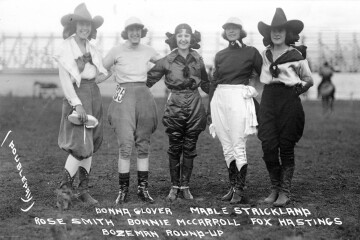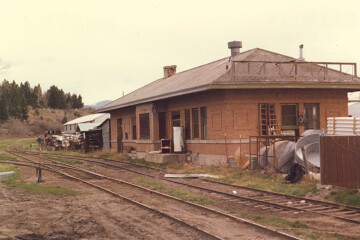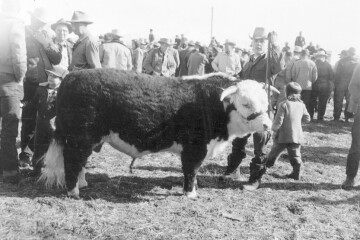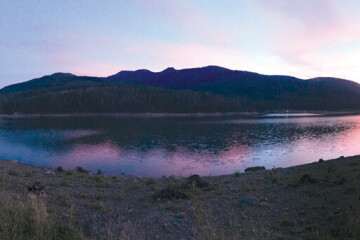Hyalite A Peak, A Reservoir, A Creek and Above All Else a True Gem

A look back at the history of our special places gives us the opportunity to engage in new ways and deepen our appreciation of those areas. The Hyalite region is a great example of how our early settlers and citizens saw the area both for its financial potential and also for its natural beauty. With its close proximity to the town of Bozeman it is easy to see the draw as a recreational area for respite and gathering.
The earliest written account of the beauty of the area was from the Hayden Geological Survey team, sent to the Yellowstone region in 1871-1872. The group viewed the area from the top of one of the peaks in the Gallatin Range and noted not only the beautiful area but also the presence of Hyalite, a colorless opal. On that expedition, they also named Mount Blackmore in honor of Mary Blackmore, the wife of one of their fellow travelers, English railroad investor William Blackmore. Mary had fallen ill earlier that summer and was staying with a Bozeman family. She passed away on July 18, 1872 and William buried his wife on a knoll overlooking Bozeman. The site would become Sunset Cemetery after Blackmore purchased the property from Daniel Rouse.
George W. Flanders came to the Gallatin Valley in 1868 with family sawmill experience from his growing up years in Vermont. By 1870, he was operating a sawmill in Bear Creek and supplying lumber for the expansion of Fort Ellis, east of Bozeman. By 1877, he was running out of timber but discovered Middle Creek (Hyalite Creek) was more suited to his plans. There he could use water power in his sawmill and also use the creek to float logs down to the mill at the mouth of the canyon. He built a large mill in 1878 and produced sufficient timber and shingles to prompt the opening of a lumber yard in Bozeman.
When Flanders first went to Middle Creek Canyon, he had free and undisputed right to available timber, but in 1906 the United States Government laid claim to practically all the timber in the Gallatin Reserve and a stumpage price had to be paid to the government. Additionally, the Northern Pacific Railroad started bringing in finished lumber. The Flanders Mill continued to operate until 1923 but Flanders’ greatest contribution to the future of Hyalite Canyon was the wagon trail he built.
Michael Langhor was the forest supervisor in 1899 and oversaw the building of a one- room cabin which he occupied during the winter of 1900 until 1904. Langhor and his assistant Horace Cleveland were responsible for a territory that went from Rocky Creek to Sourdough, over to Hyalite and south to Squaw Creek. They were charged with naming creeks, fire patrol, and surveying the boundaries as well as ordered to clear the forest of fallen logs and undergrowth. Langhor received a salary of $60 a month but had to furnish his own food, clothes, horse and wagon.
In 1890, Colonel Oliver P. Chisholm bought a home located at 319 South Willson from the Alderson family and lived there until 1911. The house is now known as the Voss Inn Bed and Breakfast. Colonel Chisholm was a wealthy miner and had discovered the beauty of the canyon in the early 1900s and returned there to build a summer cabin. The cabin was elaborate for its time and located south of the present day Hyalite Youth Camp. The Chisholm’s developed an area around the cabin for campers which was a popular location for many parties, including musicals and dancing, as a piano had been “hauled” up to the main cabin. The area became known as the Chisholm Camp.
Getting to the camp was not an easy task since the road was no more than a logging road and had not been improved since the Flanders left in 1915. Bozeman resident Dr. William S. Bole was often a guest of the Chisholms and told stories of families bringing their own tents and pitching them in a semi-circle around the front of the cabin. Folks would plan to stay anywhere from two to six weeks.
Dr. Bole so loved this area that his father William B. Bole, the owner of the Great Falls Tribune, purchased Section 23 from the Northern Pacific Railroad on November 2, 1923. He later passed ownership onto his son Dr. William S. and Lois Lott Bole. The Boles built a cabin at the edge of a large meadow backed up to the forest and from the large screened-in front porch one could look up the east and west forks of Middle Creek (Hyalite Creek). The cabin bore the name “Whispering Pines.”
In the fall of 1927, area businessman P.C. Waite, with the support of the community, petitioned A. H. Abbott, the Supervisor of the Gallatin National Forest, to change the name of Middle Creek to Hyalite Creek, stating a number of reasons. One the mineral, Hyalite, which is found in abundance and was the factor for naming Mount Hyalite, the other the commonness of the name Middle Creek. In his petition Mr. Waite states, “One can hardly find a valley in the Western part of the United States which has not a Middle Creek. There is nothing distinctive in this name. We wish that this wonderfully beautiful canyon might have a name which is distinctive. There is probably no other Hyalite Creek in this country, and Hyalite being found here in the creek and canyon, if named for this mineral, would be named for a distinctive feature of this area.”
The community got its wish on November 7, 1928 when the U.S. Geographic Board approved the change of the name from Middle Creek to Hyalite Creek.
In 1932, Tom and H.E. Murdock and O.W. Monson, all on the faculty of Montana State College, drove to Hood’s Meadow in a two-door Chevrolet. They were the first group to drive up Hyalite Canyon in a car. The next year Murdock and Monson established snow surveys in the meadow and five miles farther up the canyon. It was these surveys that provided reliable information regarding the water supply for each year.
The first Boy Scout camp was held at the Chisholm Camp in the summer of 1933 and in the fall interested scout leaders and supporters set out to locate a proper place in the Hyalite area for a Junior Camp. The site selected faced straight south toward Hyalite Peak and was not far from the historic Chisholm camp. Dr. Boles was “encouraged” to donate approximately 5 acres to the effort and the group applied to the Forest Service for 10 acres. Both pleas were successful and what is now the Hyalite Youth Camp became a source of community cooperation and focus.
An association was formed and the vision for a Community Camp for any organized and supervised youth group was put into motion. Every service organization in Bozeman, Youth Group, Lodge and Ladies Club furnished a person to serve on the Board of Directors for the camp and these people became the fund-raising team. The community was very thoroughly solicited. Dean Swingle was quoted saying, “The man who is responsible for raising more money than any one is Ray Deem. He went down Main Street and asked citizens for twenty-five or thirty dollars and 95% of the time he got it.”
By spring of 1935, funds were available to start construction of the main hall/lodge. By August, the walls were up and roof in progress so that the first Boy Scout summer camp was held and the lodge was used as the mess hall. The Girl Scouts held their first camp in 1936 with over 100 girls between the ages of 10 and 15. During the summer of 1938, three sleeping cabins and one officer’s quarters were constructed and in 1941 three additional sleeping cabins were completed.
Road improvements continued through the efforts of the Community Camp and Forest Service and extended two miles past Chisholm’s in 1936. All this construction had to be planned around the shores of developing a lake that would result from the proposed Hyalite Dam ultimately creating the Hyalite Reservoir.
In 1936, a group of farmers from the Middle Creek area wrote to the State Water Conservation Board requesting a study for a dam on Hyalite Creek (Middle Creek) for irrigation purposes, and in 1937 the site where the dam now resides was approved. Actual construction did not start until March 1940 and due to weather, the discovery of “quick sand”, and financial issues the dam was not finished until December of 1950. Hood Meadow Ranger Station was moved and Hood’s Meadow became Hyalite Reservoir as the dam did its job and the lake filled in. The reservoir was enlarged in 1993 and is now a 206-acre lake that provides recreational and fishing opportunities.







